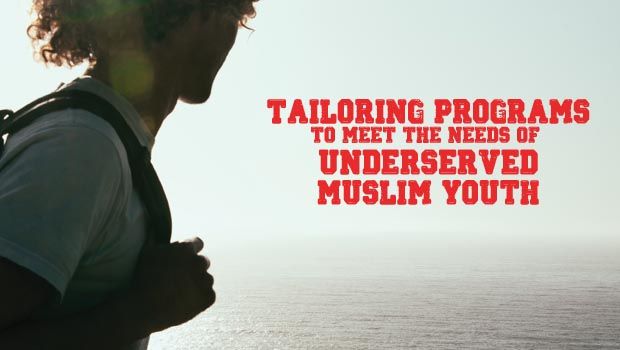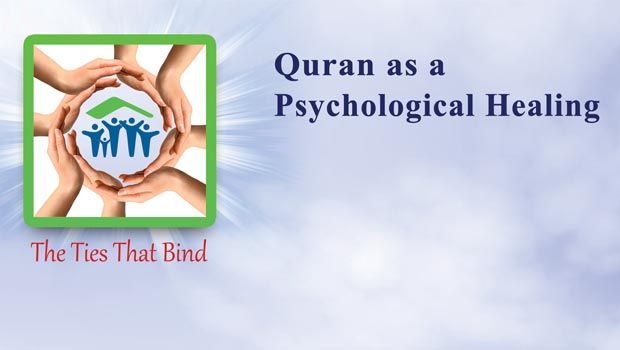It is common to enter the masjid and see adults over thirty and small children under the age of ten. However, unless a concerted effort is made to offer youth programming, it is unusual to see teens and young adults spending their time there. In this difficult sociopolitical environment where Islamophobia is rampant, kids are being bullied, and political candidates are spewing hateful rhetoric, it is imperative that we make our masajid youth-friendly, a place where they can be educated and feel included, empowered, and gain a sense of belonging.
Prophet Muhammad (pbuh) was not only aware of the vitality and strength of young Muslims, but he made sure to harness that energy to build a better Muslim community. He gave responsible youth positions of leadership; he interacted with them in a down-to-earth manner, making a point to not only listen to them but to take their suggestions, and to praise them for their contributions in front of their peers and elders. Many masajid are seeing the need for youth programming and stepping up to fill that void. It is important to keep in mind that just like the rest of the American Muslim community, American Muslim youth are a diverse group. They cannot be painted with the same broad brush. They have varying backgrounds, experiences, and needs. Not all of these needs are being met in the typical Muslim community.
The Family and Youth Institute (The FYI) is a research and education nonprofit that conducts original research on Muslim youth and families to enable the ummah to know the issues they face, make necessary changes, and benefit from the information they provide. They compiled some of their research on Muslim youth in a comprehensive report in 2015. According to the report, American Muslim youth contain many subgroups that have been underserved by their communities. In order to better support these youth, it is important to understand who they are and tailor programs and efforts to their needs. Four subgroups highlighted in the report include: young American Muslim women, African American Muslim youth, convert Muslim youth, and refugee youth. They each have specific challenges and strengths that require special consideration.
Young American Muslim Women
Aliya is an outspoken and intelligent young lady. She holds student council and yearbook leadership positions at her middle school and often voices her ideas and concerns. On Fridays, when her parents take her to the masjid, she enters with her mom through a small side entrance to the dark and dingy area dedicated for women. The khutba and all extra spiritual opportunities are directed towards the “brothers” and she doesn’t see any place where she can be involved. Often times she leaves the prayer wondering if this is even a place where she belongs.
Given the developmental importance of having a sense of belonging during adolescence and early adulthood, the lack of inclusion often results in young women seeking support and a sense of belonging elsewhere. Young American Muslim women have their own unique struggles which need to be understood and addressed. One particular issue discussed in The FYI report involves concerns and confusion surrounding their place in the masjid as determined by cultural narratives. There are many communities even today in which cultural interpretations of Islam prevent women from actively participating in community life. Some masajid discourage women from even attending congregational prayer, while others delegate women to a small back room, typically a cramped, confining space. Many prevent them from having leadership positions. In many masajid, khutbas and speeches are directed towards the men and women are usually not part of the congregational discourse. When they are discussed, it is often in relation to others (as mothers, daughters and wives) rather than independent beings serving God like their male peers.
This is in direct contrast to community life during the time of the Prophet (pbuh). He informed Muslim males not to prevent women from coming to the masjid. He sought female companions’ advice on matters of the state and he gave them time and attention to help them develop their spirituality. In many regards, the Prophet (pbuh) helped to empower women, and this resulted in the development of strong female role models and active participants in Muslim community life. For example, Aisha bint Abu Bakr not only possessed great knowledge but took an active part in education and social reform. She was the teacher of many of the learned companions of the Prophet (pbuh).
Similar to Aliya’s story, the current inability or unwillingness of many Muslim communities to provide an inclusive and empowering environment for young women often results in them feeling unimportant or unwelcome in mosques. In a 2013 study by The Islamic Society of North America (ISNA), exploring women’s participation in US mosques, the majority of mosques (86 percent) were rated as “fair” to “poor” in terms of being female-friendly, and only 4 percent of mosques in America reported programming for women as a priority. Many young women are unable to differentiate between Islamic principles and their masjid’s specific interpretation of Islam, and as a result they feel frustrated, spiritually disconnected, disempowered and alienated.
Another issue mentioned in the report deals with that of hijab. Adolescence is the period when young women may first consider wearing hijab. The decision to wear or not to wear it has differing implications depending on the young woman’s environment. For example, one young woman may decide to wear hijab per religious mandate and report the experience as empowering, but her decision may result in stressful parental or family objections. Another young woman may choose not to wear hijab, which may result in experiencing marginalization by her community. Some young women report disliking societal association of hijab as a symbol of oppression. Some express being overwhelmed by the implicit responsibility of being a representative of Islam in a non-Muslim society. In addition, some young women worry about their ability to get a job if they wear hijab or report fear of emotional or physical harm, particularly amidst today’s anti-Islamic political rhetoric and widespread Islamophobia. These unique concerns, decisions, and need for support are crucial to the development of young American Muslim women. Communities need to have an open forum for discussion of these important issues.
In addition, some young women are given mixed messages from their families and communities; they are encouraged to be outspoken about their rights within mainstream society but not to push the status quo within their religious and cultural communities. Recently, some young women have begun asserting themselves, trying to change the current narrative through leadership positions and advocating for increased programming and space within mosques and other religious organizations. Others are empowering themselves through the use of social media and using it as a platform to connect with other women and push for community conversations. The same study found that more women showed up for events at mosques where there existed female board members, female speakers were included for events, and attractive women’s prayer spaces accommodated them. Women were happy to spend their talents and expertise in the mosques where they felt at home and welcome. Muslim communities need to make an effort to open doors of opportunity for these dedicated and talented young women to both receive from and give back to their community.
African American Muslim Youth
Jamaal felt passionately about the Black Lives Matter movement and the need to end widespread racism and police brutality against African Americans. He brought this up to his Muslim youth group and suggested a fundraiser and community dinner to address the issue. It fell on deaf ears and another fundraising dinner for Palestine was planned instead. This conveyed to him that Palestinians but not African Americans were “our people and our problem.”
African American Muslims are considered to be the largest percentage of native born Muslims in the United States. African American Muslim youth are a diverse group – living in different social and structural contexts, and having varying experiences depending on a number of factors. Whether they were born Muslim or converted, live in urban, suburban, or rural environments, attend an immigrant or African American religious community, and their religious congregation’s ideological understanding and practice of Islam all influence the youth’s development. However, across the board, African American youth’s social context is highly influenced by race.
Institutional racism in America is clearly a problem, as evidenced by African American males, young and old, being disproportionately profiled, over-policed, arrested, and incarcerated. One in three African American men can expect to go to prison in their lifetime. African American youth are not immune to these experiences, and in fact, likely have a great effect on their day-to-day lives. Images of African Americans in the media and entertainment industries reinforces negative stereotypes and have an impact on the self-concept and identity of African American youth. The Black Lives Matter movement has recently been able to highlight the issue of police brutality against African Americans and increase its public exposure. Muslims must be at the forefront of this movement, as Islam stands against all oppression and senseless violence. Social justice and standing up to systematic oppression is a rich part of American Muslim history we must all embrace.
Ongoing institutional racism has also resulted in a disproportionate number of African Americans experiencing poverty. The 2012 US census results found that the median family income for African American families was $39,988 compared to $67,892 for white families. Socioeconomic factors may have a direct or indirect profound impact on the development of African American Muslim youth. Financial stability, parental stress, housing and neighborhood options, and quality of education are all factors that impact the developmental outcomes of young people.
Unfortunately, African American Muslims also often experience racism from within the greater Muslim community – both in the form of unforgivable name calling (“abeed,” the Arabic word for “slave”) as well as indirectly, such as assuming the person has limited knowledge of Islam based on their skin color. Recently the hashtag #BlackinMSA on twitter encouraged young African American Muslims to bring to light their negative Muslim Student Association experiences, and unfortunately these incidents are all too common and pervasive. Their stories are painful to read and highlight the isolation and mistreatment African American Muslim students have felt from their Muslim peers. We seem to have forgotten the words of Prophet Muhammad (pbuh) in his final sermon: “O people! Your God is one and your forefather (Adam) is one. An Arab is not better than a non-Arab and a non-Arab is not better than an Arab, and a white person is not better than a black person and a black person is not better than a white person, except in piety” (narrated in Musnad Ahmad ibn Hanbal).
Thus, African American Muslim youth experience stigmatization due to both religious and racial identification on multiple levels. The shared history, racial struggles, societal experiences, and socioeconomic conditions may result in African American youth identifying with their non-Muslim African American peers more than their immigrant Muslim peers. Ignoring or failing to address racial injustice and take action to reduce it in the community can only result from underestimating its negative impact on the lives of African American Muslim youth, as well as impeding efforts to meet their unique needs.
Young Muslim Converts
It had been five years since Bryan accepted Islam and entered his Muslim community. And yet, it was Ramadan again and here he sat at iftar time, in front of his television, with his frozen dinner, eating alone. He had attended the community iftar at the Masjid the night before but found himself eating alone there too, as people of like cultures banded together. He figured if he was going to be eating alone, he might as well be in the comfort of his own home.
About 25 percent of American Muslims are converts. Adolescence and early adulthood is a period often associated with self-exploration and this process may inspire a young person to convert to Islam. Young Muslim converts are susceptible to experiencing negative outcomes due to the loss of support from parents and relatives, and former friends, resulting in a critical unmet social need. Unfortunately, very little is known about the impact of conversion during adolescence and early adulthood on the young person’s development. Current research highlighted in The FYI report suggests that developmental issues unique to this subgroup include: disruption within the family context, lack of social support or mentorship, and challenges integrating into the Muslim community.
The decision to convert to Islam often results in the disruption of the parent-child relationship. Parental reaction may range from lukewarm support to forcible removal from the parents’ home. The change in belief system, dress and lifestyle may cause tension, resulting in some cases of loss of support from parents and former friends. Unlike older converts, many adolescents and young adults may still be physically, financially, and emotionally dependent on their parents. Hence, the impact of this loss is much greater and deeper.
As a result of this family disruption, new social support networks, a sense of belonging, integration and re-creation of a strong bond becomes particularly critical for convert Muslim youth. Unfortunately, most converts report limited social support from their Muslim community. Ramadan, Eid, and holidays associated with their former religion were reported as being a lonely time, resulting in feelings of marginalization. Ramadan is the most social month of the Muslim year, with family and friends often gathering over lavish evening meals. But many American converts to Islam break their fast alone, often in front of the TV. Those who did feel supported indicated they were “adopted” by individual families. These “family connections” served as a major source of support and helped with integration and connection within the Muslim community.
Many young converts reported a need for mentors who understand their intersecting social identities to help them with their life challenges. Some converts are forming their own groups, one of which is Ta’leef Collective. Founded as a resource for new Muslims and prospective converts, Ta’leef runs classes, discussions, and support groups. Its headquarters are in Fremont, California, but it opened a Chicago chapter in 2012. Additionally, there are small discussion groups popping up in “third-spaces” in large cities such as New York and Washington, DC to gather and share resources and build community.
Many converts also encounter struggles in their personal lives that require proper support. Many convert youth report struggling to channel their sexual energy after conversion. They now need to alter their previous behaviors – such as gender interaction, dating, and premarital sex. They may try to marry quickly to protect themselves from temptation. Converts also report difficulty with the marriage process due to lack of opportunities to meet potential mates, lack of support system to assist in the search, and potential spouses’ family objections due to concerns regarding implications of marrying a convert. Often times female converts are pursued for citizenship purposes rather than as genuine life partners.
Experiences may differ based on the individual’s cultural background and the community into which they are attempting to integrate. One study reports that African American converts often believed that white converts received preferential treatment. White converts, on the other hand, often see themselves as a “community trophy.” As one shared: I think more than anything you’re kinda like a mascot…people are proud to like parade you around as a white convert or show you off, and, without ever really getting to know you.
White women, particularly, who choose to wear hijab may experience more difficulty transitioning as they feel the loss of their societal white privilege. Female Muslim converts are particularly mischaracterized by the media, which portrays them as brainwashed, weak-willed, and easily misled by Muslim men. Deanna Othman writes that the female Muslim convert “provides a spectacle for the public to shake their heads at because she is a tragic character, and her tragic flaw is her conversion” to Islam. When young American Muslim converts are not supported through these trials and provided with a much needed social network, they often stop coming to the mosque all together and may even leave the religion.
Refugee Muslim Youth
Ameera sat on the floor in the corner of the small apartment, wishing that she were still in Syria before the war struck. She missed her friends and cousins and their fun days laughing in the garden. She missed the family gatherings that went late into the night and the large spread of food her mama used to cook. Most of all, she missed the peace and contentment her heart had felt before the war and the sleep that used to come so easily…
As the political conflicts continue throughout the world, increasing numbers of refugees from predominantly Muslim countries are arriving in the United States. Refugee Muslim youth experience unique struggles as they attempt to integrate into the US. Understanding their individual and family experiences during the migratory process (pre-migration, asylum seeking, and resettlement stages) will be critical in assessing the impact on the individual’s development, identifying potential risks, and developing appropriate interventions. In addition, mental health, social disruption, and educational challenges have to be considered when trying to promote youth development in this subgroup.
American Muslim refugee youth who have witnessed or been victims of violence may report problems processing these traumatic events. Their experiences may result in developmental delays, difficulties managing emotions, or poor academic performance. They may experience higher incidence of depression, anxiety, and post-traumatic stress disorder. They are more likely to report survivor’s guilt, a pessimistic outlook on life, and suicidal ideation. Often they may exhibit a developmental regression such as bedwetting, or they may report difficulty concentrating in class. In addition, traumatic experiences may result in the formation of negative thoughts and expectations about themselves, others, the world, and their future. This can impact the young person’s ability to form meaningful attachments and develop a social support network.
The lack of trust in institutions and the future also complicates young refugees’ educational experiences. Many live in areas with poor school districts with overcrowded classrooms that have limited resources. There is often inadequate funding for language acquisition programs and this, coupled with racism and xenophobia, increase the difficulty of transition. Refugee youth that have experienced multiple losses, financial stress, lack of parental monitoring/availability, lack of social support network, and untreated psychological wounds may have an increased likelihood to engage in high risk behaviors. Unfortunately, the needs of this subgroup often go unnoticed and are therefore minimally supported by their community.
The field of research on American Muslim youth is still evolving, and there are many questions that need to be explored and answered. Continued research is needed in order to understand the varying subgroups, their challenges, and how to better meet their needs. The current knowledge can be used by parents, as well as educational and religious institutions to form religiously, culturally, and developmentally relevant programs for young people, families, mentors, organizations, and mosques. By fulfilling the unmet needs of these underserved Muslim youth subgroups, and Muslim youth in general, we can hope, insha’Allah, to more effectively promote positive development of American Muslim youth. Individuals interested in additional information can find resources at The Family and Youth Institute’s website: www.thefyi.org





